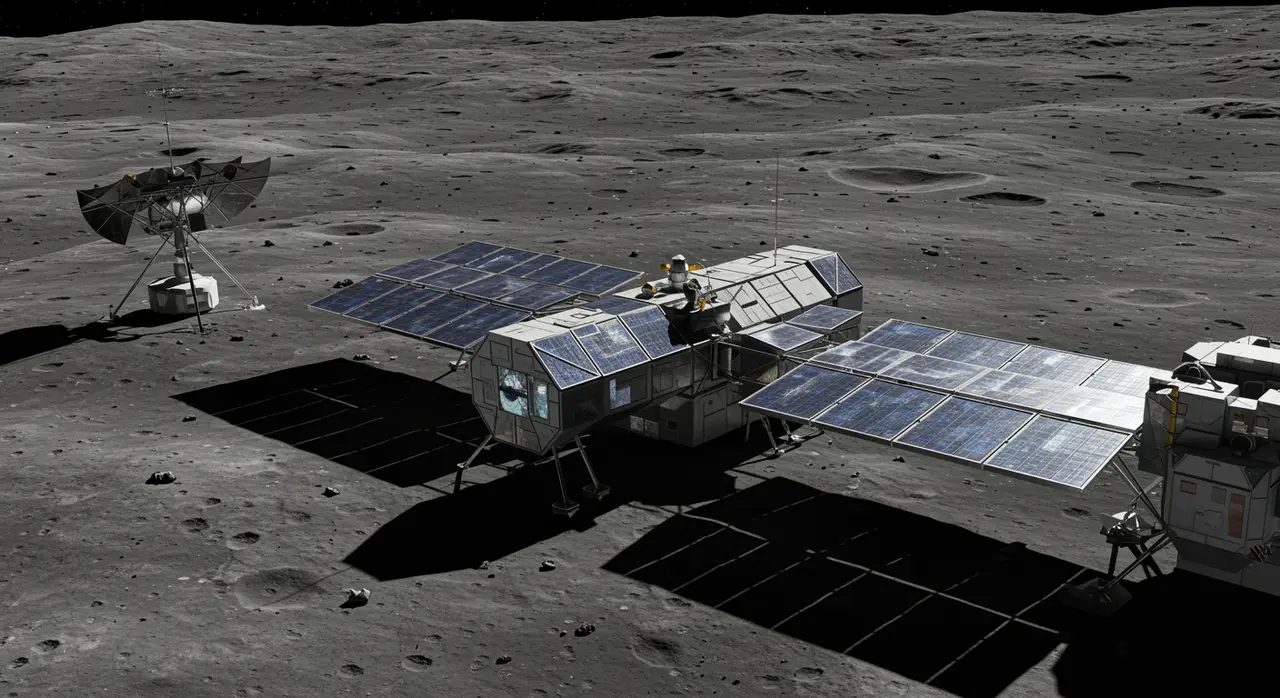Lunar Dust Solar Panels: Transforming Space Exploration with Sustainable Energy Innovation
37 views
Turning Lunar Dust Into Power: A Bold Leap Toward Sustainable Space Exploration
In a groundbreaking stride for space exploration, scientists are reimagining lunar dust—not as the troublesome, clingy nuisance it has long been known to be, but as a key ingredient in creating solar cells capable of powering moon bases. By harnessing the abrasive, electrostatic properties of this ubiquitous material, researchers have developed a method to transform simulated moon dust into "moonglass," a substance that, when paired with perovskite, has the potential to revolutionize energy generation in extraterrestrial environments.
The process, as detailed by the team behind this innovation, involves melting lunar dust simulant into moonglass, which serves as the foundational layer for solar cells. These cells have already demonstrated an efficiency of 10%, with aspirations to reach 23% by refining the clarity of the moonglass. Importantly, the material exhibits remarkable resilience to radiation, a critical advantage over conventional solar cells that degrade under prolonged exposure to cosmic rays. The implications of this development are vast, not least because it could slash the astronomical costs associated with transporting Earth-made solar panels to the moon by an estimated 99%. Furthermore, these lightweight, locally produced panels promise to generate 100 times more energy per unit of transported mass than their terrestrial counterparts.

The prospect of moonglass solar panels represents more than a technological breakthrough; it underscores a shift in how humanity approaches the challenges of off-world habitation. The moon, with its harsh vacuum, weak gravity, and temperature swings ranging from blistering heat to bone-chilling cold, poses formidable obstacles to sustained human presence. Yet, the ability to fabricate energy infrastructure on-site could pave the way for self-sufficient lunar colonies, reducing reliance on Earth-based resources and enabling longer missions. This is especially significant as space agencies and private enterprises increasingly set their sights on the moon as a launchpad for deeper space exploration.
Of course, the path to realizing this vision is far from straightforward. While the initial experiments have yielded promising results, the researchers acknowledge that the moon's unique environmental conditions could complicate the production and stability of moonglass solar panels. Lunar gravity, which is just one-sixth that of Earth, may affect the melting and solidification processes, while the vacuum environment could introduce unforeseen challenges in material handling and assembly. Moreover, the extreme temperature fluctuations—ranging from 127°C during the lunar day to -173°C at night—could test the durability of these panels in ways that laboratory simulations cannot fully replicate.
To address these uncertainties, the team plans to conduct small-scale experiments directly on the lunar surface. These trials will assess not only the feasibility of manufacturing moonglass solar panels in situ but also their performance under real-world conditions. If successful, such experiments could mark a pivotal step toward establishing a sustainable energy framework for future lunar exploration, with ripple effects extending to Mars and beyond.
The broader implications of this research are profound, touching on the fundamental question of how humanity can adapt to and thrive in extraterrestrial environments. By leveraging local resources like lunar dust, scientists are effectively rewriting the rules of space exploration, shifting from a model of dependency on Earth to one of self-reliance. This paradigm shift could redefine the economics of space travel, making it more accessible and less resource-intensive. It also aligns with the growing emphasis on sustainability, both in space and on Earth, as researchers seek to minimize the environmental footprint of exploration activities.
The idea of transforming lunar dust into energy is emblematic of the ingenuity that drives scientific progress. What was once seen as an obstacle—a gritty, clingy substance that posed hazards to equipment and astronauts—has been reimagined as a cornerstone of future energy systems. This transformation speaks to the power of human creativity to turn challenges into opportunities, a quality that will undoubtedly be crucial as we venture further into the cosmos.
As researchers prepare to test their innovations on the moon, the world watches with anticipation. The success of moonglass solar panels could herald a new era in space exploration, one in which the moon becomes not just a destination but a stepping stone to the stars. And while challenges remain, the vision of a self-sustaining lunar base powered by the dust beneath our feet is no longer confined to the realm of science fiction—it is an increasingly tangible possibility, fueled by the relentless pursuit of knowledge and the boundless ambition of humankind.